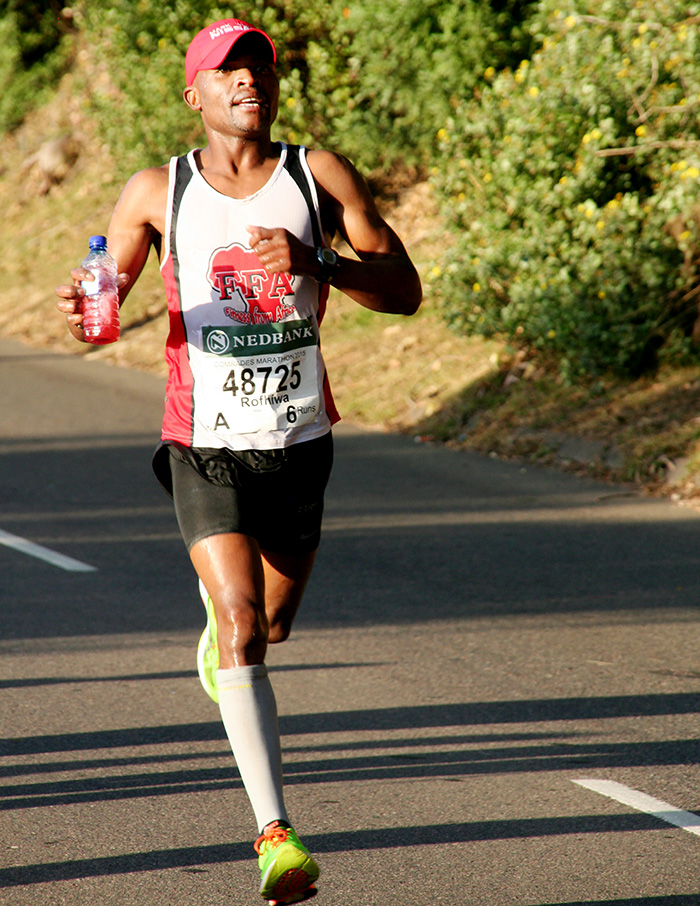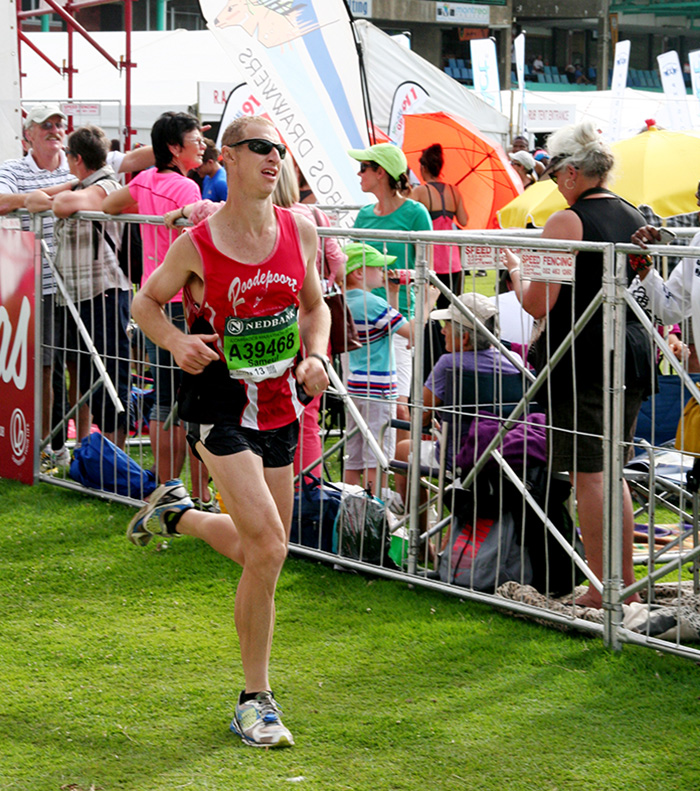One of the ultimate challenges for many runners is to be able to say that they completed a marathon. In fact, it’s on the bucket list of a lot of “non-runners” due to the prestige associated with the feat. The mystical 42.2km (26 miles) distance represents a sense of incredible personal achievement to the extent that jobs, families and other responsibilities are put on hold in order to achieve it.
Here in South Africa, mostly due to our ultra-marathon culture, the marathon achievement does not always receive full credit. In preparation for Comrades for instance, it’s not unusual for some athletes to complete three or four marathons and two or three ultra marathons before lining up for the Natal classic. However, the joy and satisfaction on the face of a first time marathon finisher totally dismisses that theory and one is reminded of how very special your first marathon can be and should be!
My first marathon was at the tender age of 17 years, as I was swept along by the marathon fever of the staff of the running shop where I was doing some part-time work. As a fit and keen young track and cross-country runner I was intrigued by the challenge, but not intimidated. My training was certainly not geared towards a marathon, and this I realised with great regret as I reached the 32km mark! I hit the wall with full force and had to drag my weary body over the last 10km walking more than running. I finished just outside my initial goal of three hours, but the shock of the experience kept me from running my second marathon for a full 10 years!

So what does it take to run a marathon, and can anyone run a marathon? I believe that with a bit of physical ability and a lot of determination, most people are able to go the distance. To finish the event is not as difficult as mastering the distance though. There are a few steps I believe that need to be conquered in order to get the most out of yourself, whether it is to finish the event, or to run your best time.
Step One: Lay the Foundation
For novices the foundation means starting with smaller distances in order to allow your body to get accustomed to the rigours of running. Doing 10-21km events for six to twelve months will help your frame and cardiovascular system to systematically get used to the jarring on the road, to gain physical strength and to develop the energy systems required for supplying the fuel needed for events of two to three hours and longer.
For more seasoned runners, this period would entail building of the aerobic base by doing easy, but ever increasing distances for a month or two.
Step Two: The Long Run
Marathon running means going beyond the comfort zones we may find ourselves in when doing 10 and 21km events. The reason for this is that the system gets nearly depleted of glycogen after about two hours of sustained effort and it’s time for the body to start finding other sources of energy. One of the best sources to this effect is fat. However, we need to teach our bodies how to use fat, and by doing long training efforts this is achieved very successfully. The late Arthur Lydiard encouraged his athletes to do three long runs per week during their base phase in order to achieve this effectively and optimally. Some runners split a 20km into two 10km training runs on the same day. Although it might have some benefit, there is no comparison with a single long run effort though. Long runs should be introduced gradually though, e.g. starting with an hour, and slowly increasing to three to four hours over a few months. By jumping into runs that are just too far for your current level of fitness, you won’t be doing your body any favours as there is a catabolic (breaking down) effect rather than building. Patience is a critical skill for all marathon athletes!
In addition to the physical effects, one should not underestimate the psychological effects of running for three hours. Non-runners will often ask us what we think about while on the road for so long! For many of us some awesome business ideas are formulated during this time, but it does take some getting used to being on the road for hour after hour on a mental basis.
Step Three: The Fast Run
First you teach the body to run regularly, and then you teach it to run long, now in step three we step up the pace! Renowned Italian coach Renato Canova, who has coached some incredible Kenyan stars, will be the first to tell you that you need to cover all your bases if you want to be the best runner you can be. In other words, all the phases should include a bit of everything that you would like to implement in your final phase. That includes slow running, leg speed (biomechanical efficiency), long intervals, short intervals, anaerobic training, long runs, hill work, strength, plyometrics, etc. The volume and intensity of these sessions is the critical factor though as all should be systematically increased towards your goal event. For the marathon runner it will mean that during the preparation months you would like to get your body used to the pace and the demands that you will face on race day. Running one hour at goal pace is a far cry from running 3-4 hours at goal pace! If your long runs are long, social slogs during this phase, you are seriously misleading your chances of success. Unless of course your goal is to run long and slow on race day!

Long runs should be utilised to simulate your goal event by increasing the distance of the long run first of all, and then the speed of the long run. There are a few ways of doing this, including long repetitions during the long run, tempo half marathon events, and progressive tempo runs where you are teaching the body’s energy systems to “change gears” as you get closer to the business side of the event.
Step Four: Training the Mind
Eventually when the big day approaches, as exciting as it is to know that you will be a marathon runner on the day, the nerves do start to become a factor. It is as important to train your mind as it is to train your body. Goal setting, visualisation, positive self-talk, and concentration are all mental preparation techniques that can assist us to get those butterflies to fly in formation! Thinking about the race, your strategy, positive self-talk and other associations are all ways to ensure you look forward to the day with confidence and not trepidation.
One of the most exciting parts on the big day is when you go beyond the furthest distance you have run to date. And from 35km onwards, you are very much aware that you are in marathon territory! Well-known sports professor Tim Noakes indicates that this is where you come face to face with yourself and start learning things that you may or may not want to know about yourself! That’s the time to start digging deep, to reach way down and demand the results that you have prepared for! The results are not the same for everyone but the most courageous will triumph and rise to the top without fail. So when you come onto that field or into that stadium, when you are running down the final straight, and when you look up at the clock as you cross the finish line, you will know that you are no longer what you were before the gun sounded early that morning. For after the event, the tiredness and sore legs will fade after a few days, but the face in the mirror will forever be a marathon runner!
Marcel Viljoen is an online fitness coach and a 2h39min marathon runner. You can get in touch with him at marcel@fitnessfromafrica.co.za
Words By: Marcel Viljoen

